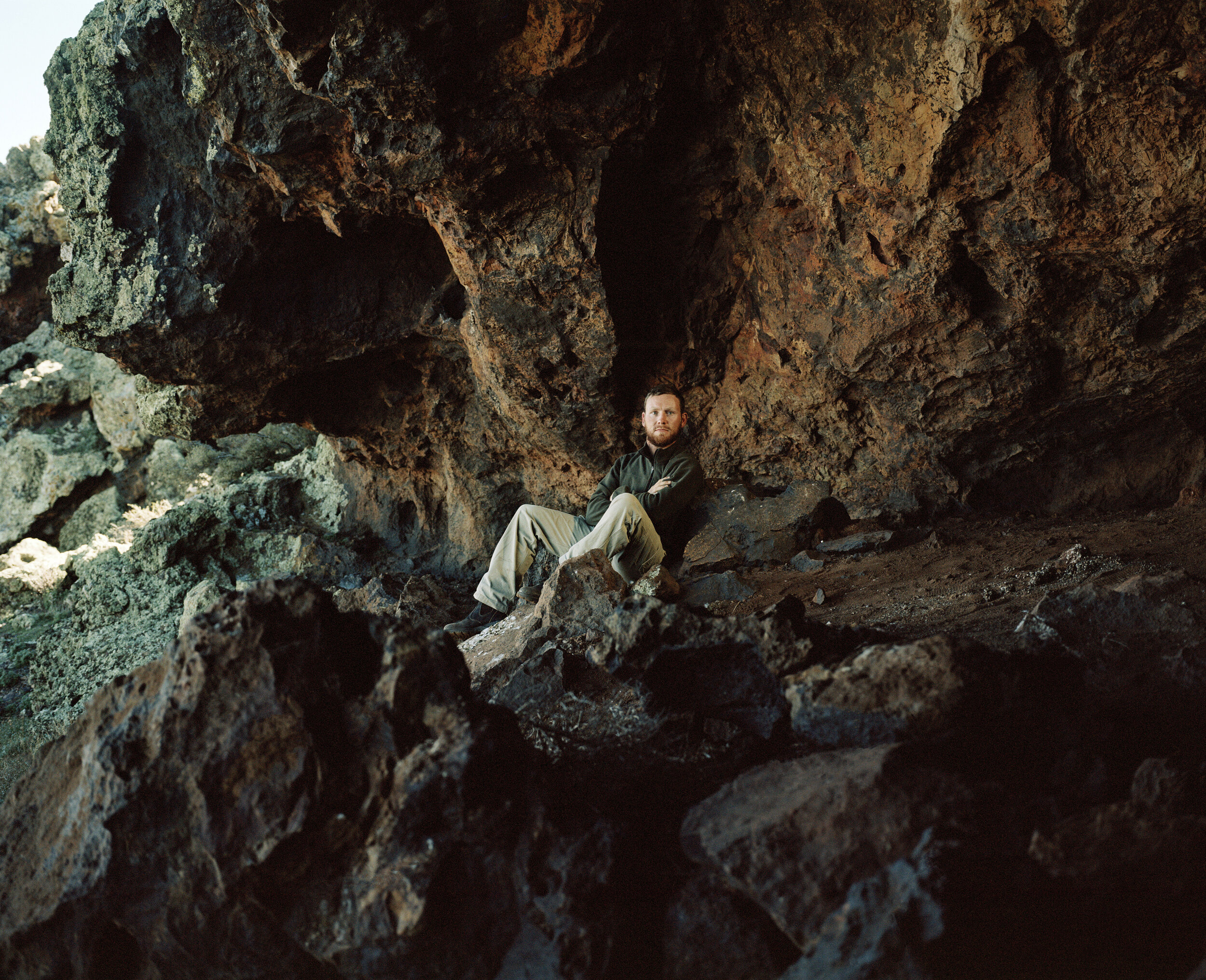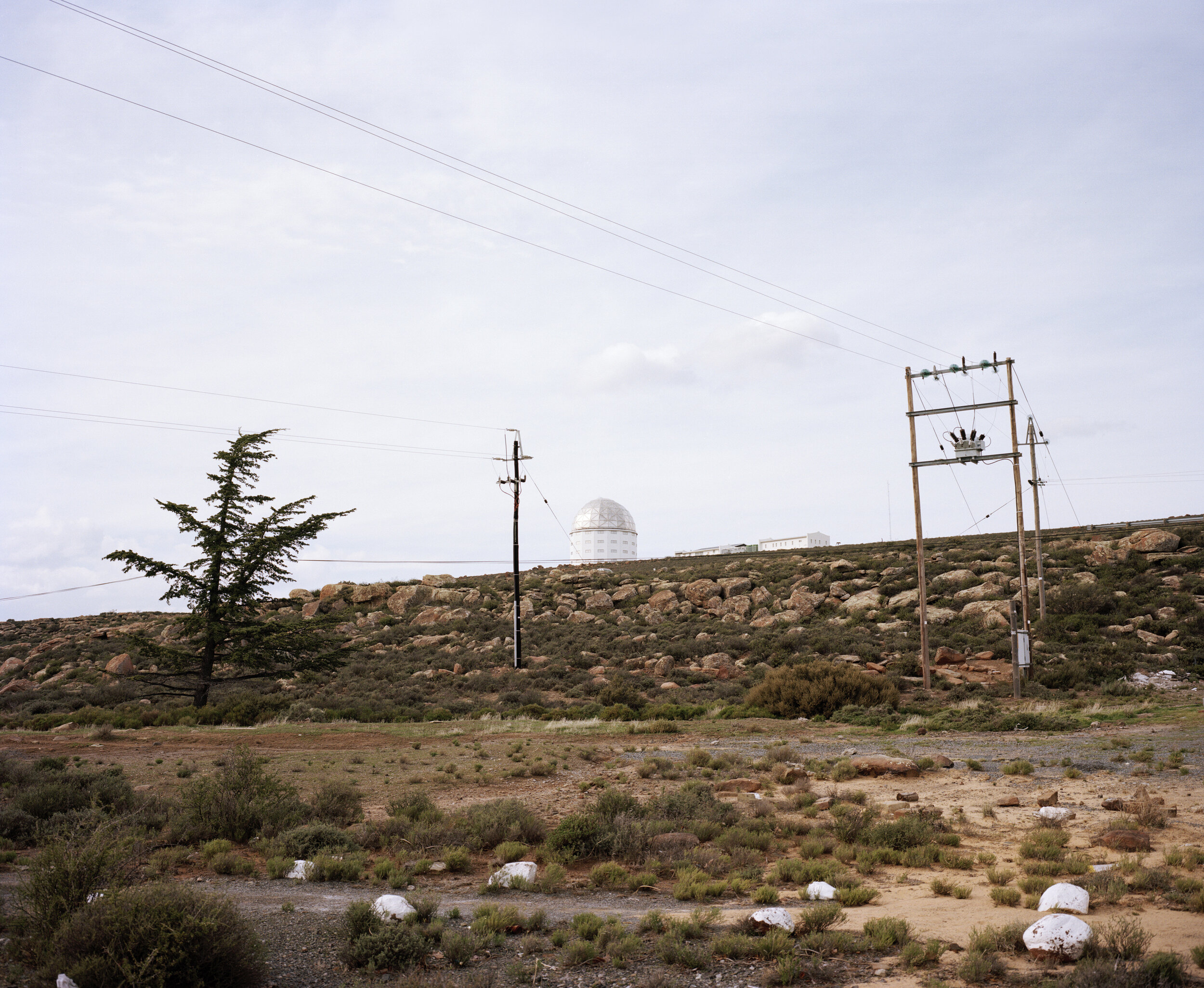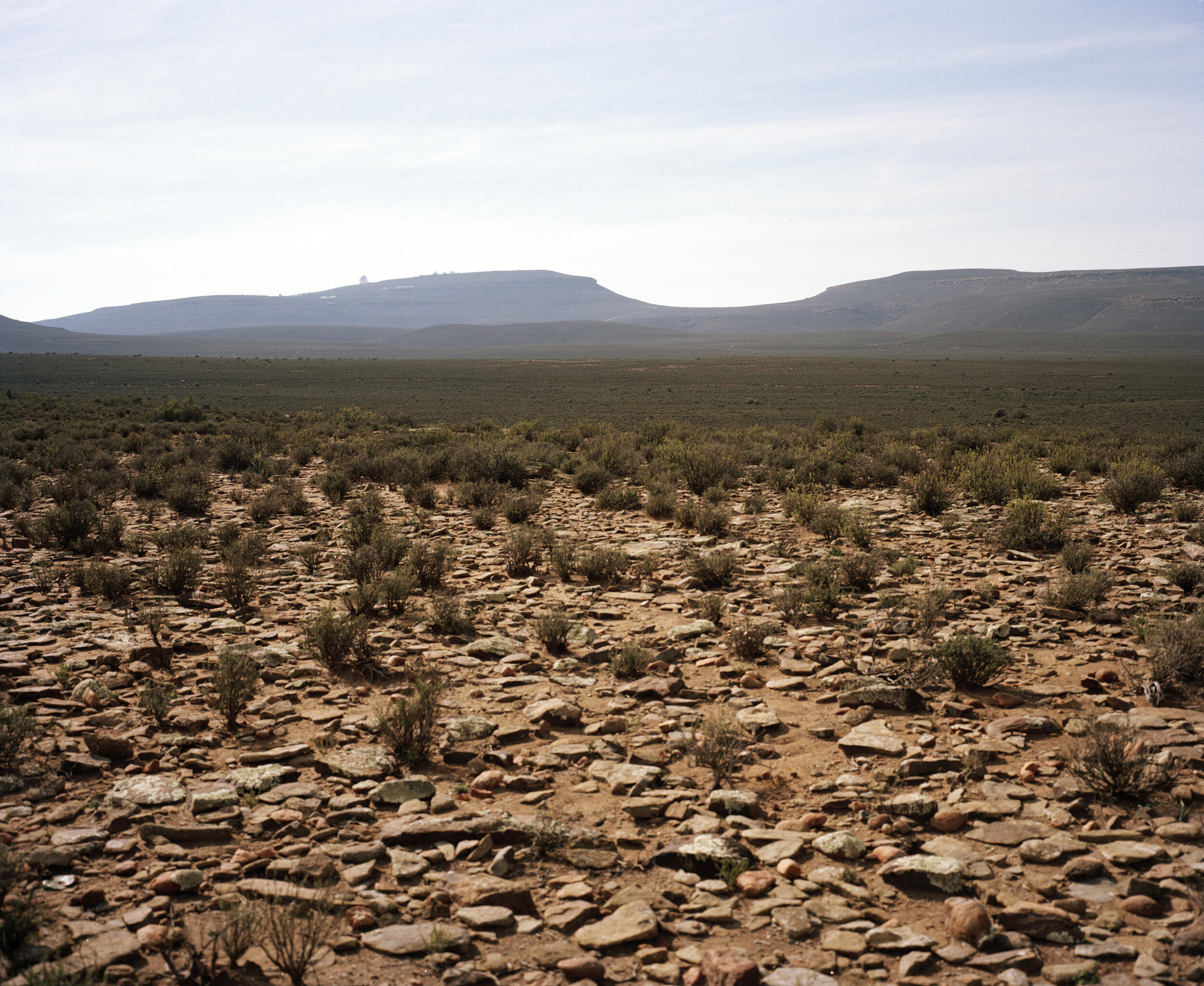’I’m actually from Kuilsriver, but we moved to Paarl and I got heavy asthma - so we decided to move here. Since we’ve been here I don’t get any asthma - nature became my health-pill here. I’m relaxed. We are totally off the grid - we don’t have a landline, or cell reception and the police van doesn’t even catch his radio signal here. We are cut off from the world and like it that way - and the kids can’t bother us unnecessarily. We do go to town once a week and then they can reach us. If there is an emergency the police will come out and call us. I prefer this place, because here you can actually see the stars - you get the feeling that they are so near that you want to pick them like flowers, while in town you don’t see it as there are too many lights around you. Here you get the darkness and it is so near to nature.’
’You have to be devoted, I’m basically outside every night. I meet so many people, and it gives me a reward - when people say they enjoyed it. Lastly I would say you learn how insignificant we are in the greater universe and it makes you feel humble - that is the way I want to look at it every night.’
Jurg Wagener, Star Gazer
'I have to agree that it is not only our world - it is such a vast area, it is a never ending story… where do you stop, where do you begin? Once again it makes you feel very humble.’
Jurg Wagener, Star Gazer
”Sarie, loving, loving child. Listen. I am what you can become, and you are what I want to become.” - Eva Stellaris to Sarie, Swart ster oor die Karoo by Jan Rabie, 1957. Translated from Afrikaans to English.
Photograph inspired by ‘Swart ster oor die Karoo’ (Black star over the Karoo) by Jan Rabie, 1957
I become very happy when I’m up there, partly because of nature, you see all kinds of natural things. Also the mirrors, how they clean the mirrors and how they are so busy with the the machinery and all those things - it’s all beautiful. I left school early, but I did have science at school, and it attracts me - when I see the things they do. It makes me curious to learn about the telescopes.’
Anna van Wyk, Sutherland local.
Some of the evidence remaining of the old main route to Sutherland - these lines of rocks can be seen from the R354 currently in use. The inside of the old road seems to have fully restored over time, looking exactly the same as the fynbos surrounding it. We were wondering if the same fate awaits the R354.
’You have to be devoted, I’m basically outside every night. I meet so many people, and it gives me a reward - when people say they enjoyed it. Lastly I would say you learn how insignificant we are in the greater universe and it makes you feel humble - that is the way I want to look at it every night. If you look at the whole concept, I have to agree that it is not only our world - it is such a vast area, it is a never ending story… where do you stop, where do you begin? Once again it makes you feel very humble.’
Jurg Wagener, Star Gazer
Koppies are small hills - often cultivating a very specific combination of plants - facilitating a micro eco-system by giving shade and shelter for all kinds of creatures - often resulting in a very different appearance and make up to the surrounding valleys or neighbouring mountains.
The thing is we observe most of our targets for other people, so we don’t really know exactly what they are. We sort of understand a little bit. My job is mostly to make sure that they get their data properly, but their science reasoning is not my specialisation.
’I’m actually from Kuilsriver, but we moved to Paarl and I got heavy asthma - so we decided to move here. Since we’ve been here I don’t get any asthma - nature became my health-pill here. I’m relaxed. We are totally off the grid - we don’t have a landline, or cell reception and the police van doesn’t even catch his radio signal here. We are cut off from the world and like it that way - and the kids can’t bother us unnecessarily. We do go to town once a week and then they can reach us. If there is an emergency the police will come out and call us. I prefer this place, because here you can actually see the stars - you get the feeling that they are so near that you want to pick them like flowers, while in town you don’t see it as there are too many lights around you. Here you get the darkness and it is so near to nature. I look at the moon basically every night because I walk up and down between the kitchen and here. Actually when I look at the moon I can almost tell you how many days it will be until full moon or till dark moon. You pick up a lot of things about the nature - like when it will rain. You can tell by the baboons and how they are screaming, by the ants carrying their food. Nature is absolutely part of my life here and I wouldn’t exchange it for town - not at all. I mean, you can’t actually describe all of this, you got to be here to feel it - to be part of it… sort of. I just acknowledge myself as a very privileged person, to be here - just to see the sky and nature on the ground and everything all come together. You have to be here to see what is going on - to live with it. Then you start to believe how great nature is, how great God is. I mean he put everything there for us and it fits together like a puzzle. I got no worry about time because when you are in nature you lose time, because there are so many things you observe. Time is not a factor here. You must not worry about getting older because you will get older.’
‘That was the most beautiful to me, when there is a shooting star, I always believed you could make wish - for good luck. Then I asked some questions and they answered, ‘o, no - when there is a shooting star, it means it is dead and it is going to fall’ and there where it falls, everything must just pray and ask ‘God don’t let it fall on a house, don’t let it fall on a person’ - because it can burn and kill, and you don’t know if it has fire inside, you don’t know if it has hail inside or even iron inside.’
Anna Skippers, Kamammas Community centre coordinator, Sutherland, Northern Cape.
Anna lives in Sutherland, close to the largest optical telescope in the Southern Hemisphere.
Anna lives in Sutherland, close to the largest single optical telescope in the Southern Hemisphere.
'With the 1.9m we were looking at the spectra itself. Like looking at a prism, we used diffraction gratings where you could shift the light and look at different parts of the colour spectrum - from there you can tell from what stars were made of and so forth. Just doing star gazing, especially if you look at Jupiter and Saturn, it blows your mind away. If you look at Jupiter it looks like a solar system on its own. The big mother planet with a few small moons around it, and from time to time you see one of the moons disappear. Then you look at Saturn with the nice rings around it, it looks like a sombrero - that is just unbelievable.'
Francois van Wyk, Night Assistant and service observer, South African Astronomical Observatory, Sutherland.
The R27 road passes through exceptionally desolate areas and is one of the main routes from Cape Town towards the SKA project site. Here, the first phase of the largest radio telescope in the world is planned for completion in around 2024.
Sientjie lives in the rural area of Sutherland in the karoo, where the SAAO is (South African Astronomical Observatory) and many international Astronomical projects are active. She showed us where some constellations are usually positioned in the sky, even though it was day time.
'With the 1.9m we were looking at the spectra itself. Like looking at a prism, we used diffraction gratings where you could shift the light and look at different parts of the color spectrum - from there you can tell from what stars were made of and so forth. Just doing star gazing, especially if you look at Jupiter and Saturn, it blows your mind away. If you look at Jupiter it looks like a solar system on its own. The big mother planet with a few small moons around it, and from time to time you see one of the moons disappear. Then you look at Saturn with the nice rings around it, it looks like a sombrero - that is just unbelievable. My first three years I was working with other people, as I was undergoing training. From there on most of the time I was on my own. Sometimes for 14 hours in winter, just with a CD player, my night lunch and my coffee. Then it is up to you to make all the decisions. You just got to make sure you stay awake and alert. Otherwise you can screw up big time. I did fall asleep, but the thing is, if you feel you are tired it is best to close the dome, switch everything off and sit and sleep. If you leave things on and you fall asleep then you are in trouble.’
Francois van Wyk, Night Assistant and service observer, South African Astronomical Observatory, Sutherland.
'My first three years, I was working with other people as I was undergoing training. From there on, most of the time I was on my own. Sometimes for 14 hours in winter, just with a CD player, my night lunch and my coffee. Then it is up to you to make all the decisions. You have just got to make sure you stay awake and alert. Otherwise you can screw up big time. I did fall asleep, but the thing is, if you feel you are tired it is best to close the dome, switch everything off and sit and sleep. If you leave things on and you fall asleep then you are in trouble.’
Francois van Wyk, Night Assistant and service observer, South African Astronomical Observatory, Sutherland.





























